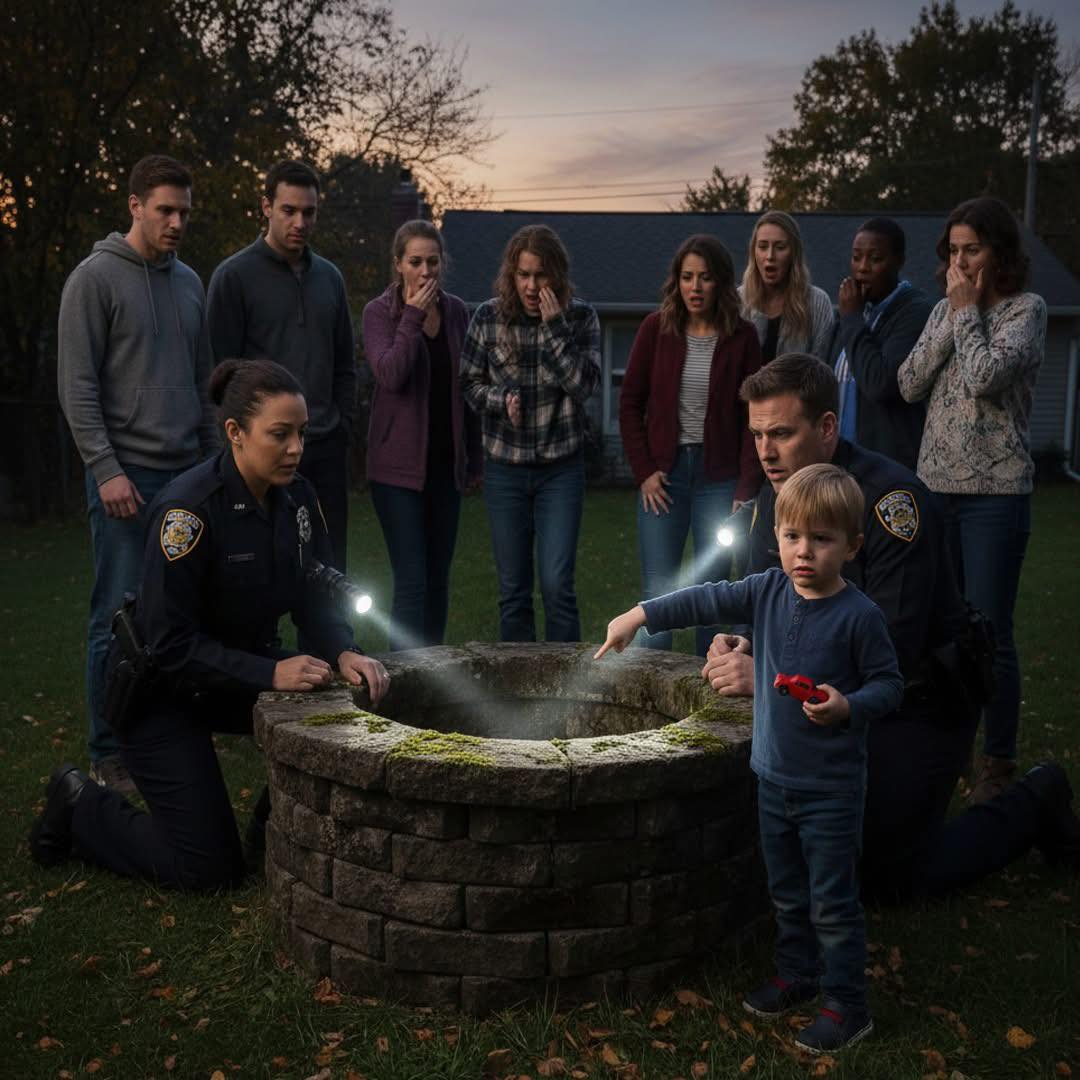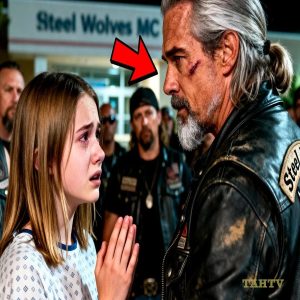“My real mother is in the well.”
Four-year-old Marcus Sullivan said it one quiet afternoon while playing on the carpet with his toy car. His adoptive mother, Clara, froze. His father, Vincent, lowered his newspaper with a frown.
“What did you say?” Clara asked carefully.
Marcus looked at her with strange calmness. “My real mom wore a blue dress. She fell into the well in our yard. Daddy Vincent was there.”
Vincent scoffed. “Nonsense. Kids make up stories all the time.” But Clara felt her chest tighten. Marcus had only lived with them for a year since being adopted from an orphanage. No one had ever told him about the old well buried in their backyard.
Over the next weeks, Marcus repeated the same line. He even drew pictures: a woman with long dark hair in a blue dress, falling into a black hole. Clara grew more unsettled. When she asked her neighbor Lucy, Lucy dismissed it: “Orphanage kids imagine things. Don’t let it get to you.”
But Clara couldn’t ignore how precise Marcus was. He described waking up at night, hearing a scream, running outside, and seeing only Vincent holding a shovel near the yard.
When confronted, Vincent grew defensive. “You believe a four-year-old over your husband? The adoption papers are valid. Stop digging into the past.” He slammed his glass to the floor.
Yet Clara noticed something troubling: the adoption file contained almost no details. The man who supposedly arranged it couldn’t be traced. Doubt gnawed at her.
At the same time, Marcus’s behavior worried the community. Parents complained he scared their children by whispering about “the woman in the well.” Eventually, Clara was advised to homeschool him.
Desperate for answers, she brought Marcus to a child psychologist, Dr. Beatrice Carter. “Tell me about your dream,” Dr. Carter said.
Marcus didn’t hesitate. “It’s not a dream. My mom—her name is Anna—was pushed. Daddy Vincent pushed her. She cried but no one helped.”…

Dr. Carter leaned back in her chair, unsettled. The detail in Marcus’s voice, the clarity of his words—it didn’t sound like fantasy.
Clara’s hands trembled as she held her son’s drawing: a well, a woman in a blue dress, and a man with a shovel.
When she confronted Vincent again, his anger was sharper this time.
“Enough of this madness! That boy is unstable. If you keep listening to him, you’ll destroy this family.”
But Clara could no longer ignore the gnawing dread. She began researching. Through old town records, she discovered that twenty years earlier, a young woman named Anna McCarthy had lived in the very same house. She had mysteriously disappeared one summer evening and was never found. The case had gone cold.
Clara’s blood ran cold when she saw Anna’s picture in the archive—it was the same woman Marcus described. Long dark hair. Blue dress.
The memory of Marcus’s quiet words came back like an echo:
“My real mother is in the well.”
One stormy night, after Vincent had gone to bed, Clara sneaked into the backyard. The outline of the old well was still faint beneath the grass, covered by a circle of heavy stones. She felt her heart pound in her throat.
The next morning, she made an anonymous call to the police.
Weeks later, investigators arrived with shovels and heavy machinery. Vincent shouted and cursed, demanding they stop, but the order had already been signed. The ground was broken open, mud and roots flying.
And then… silence.
One of the officers shouted: “We’ve found something!”
From the depths of the earth, they lifted a skeleton wrapped in the tatters of a faded blue dress. Around its neck hung a locket, rusted but intact. Inside was a photo: a young woman, smiling, holding a baby.
The baby’s eyes were unmistakable. They were Marcus’s.
Vincent was arrested on the spot. His pale face betrayed decades of secrets. Clara clutched Marcus tightly as the boy whispered, calm as ever:
“I told you. My real mother was in the well.”
Twenty years of silence had been broken—by the voice of a child who remembered.





